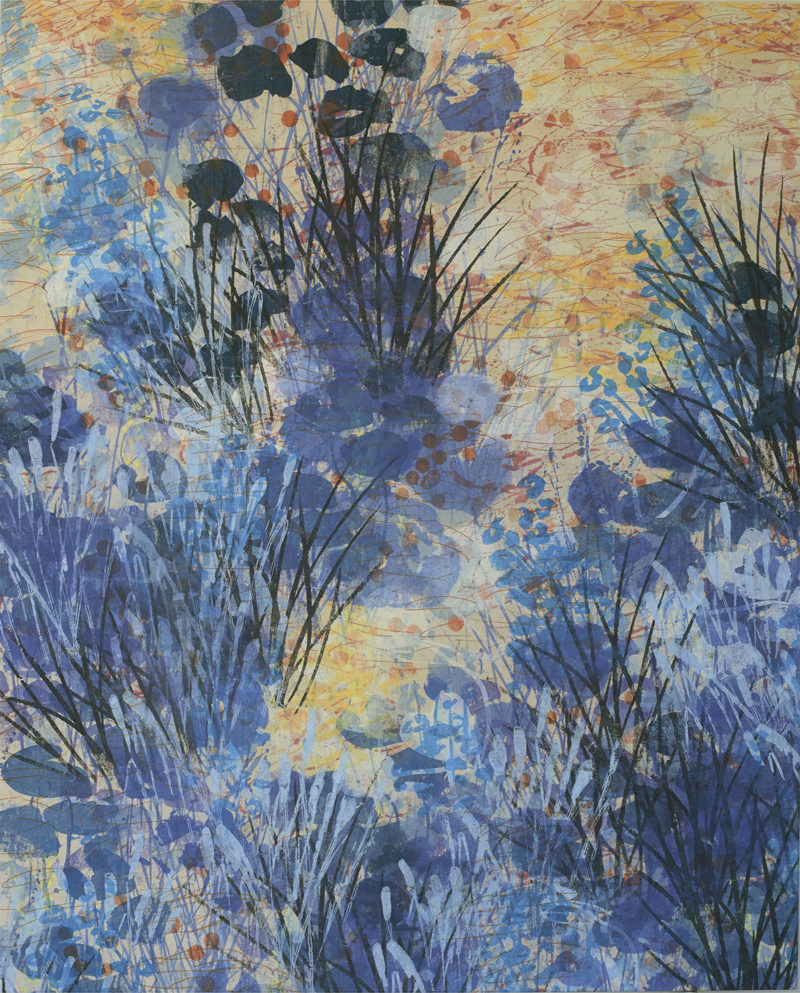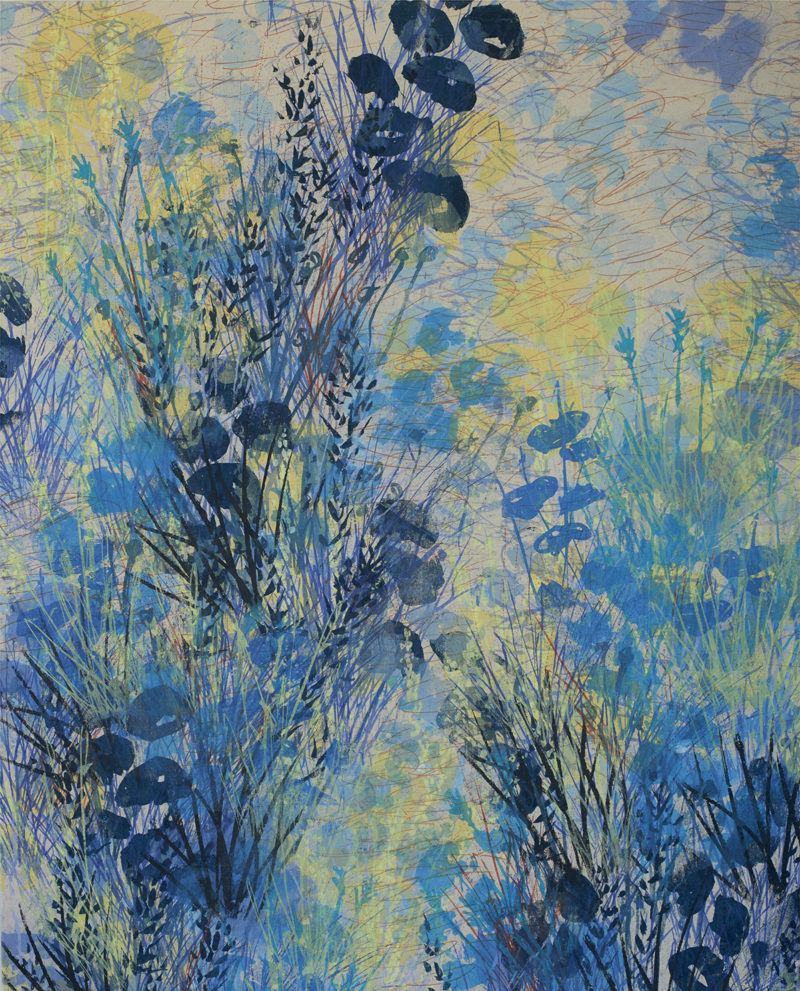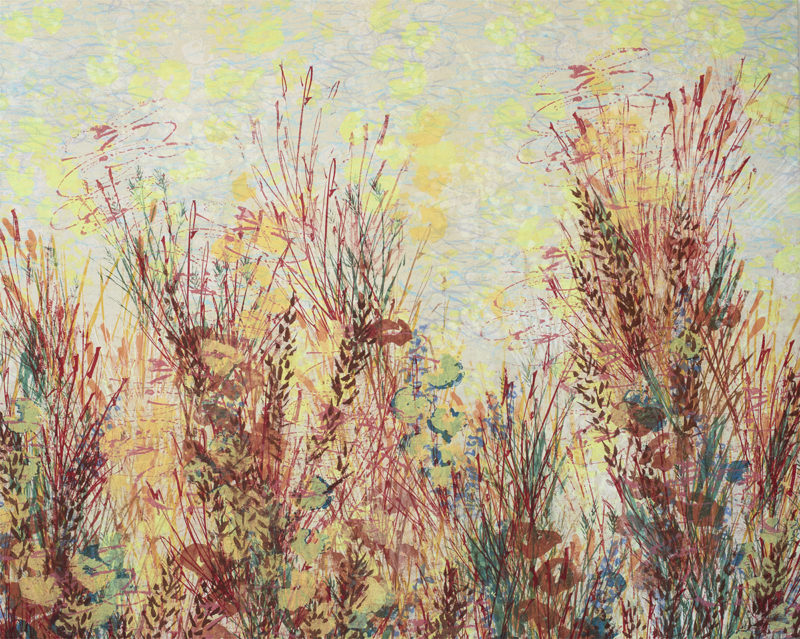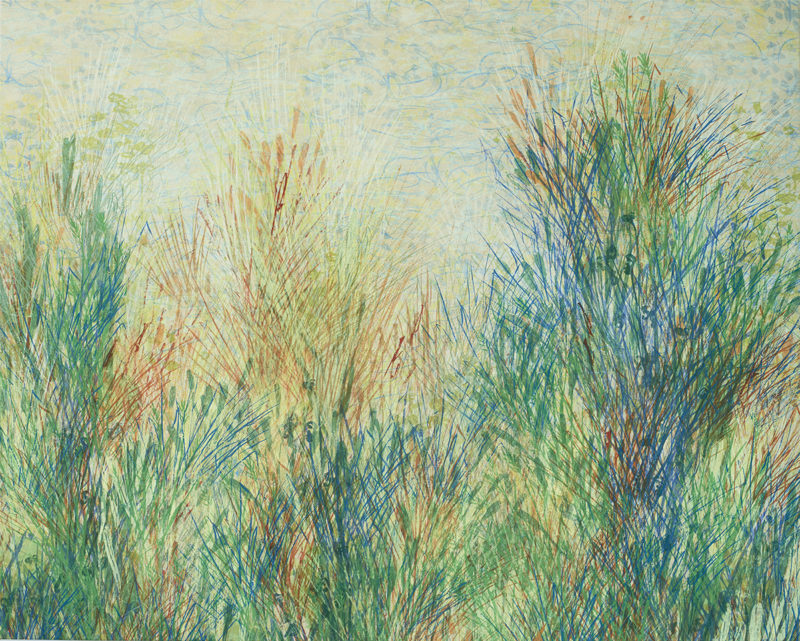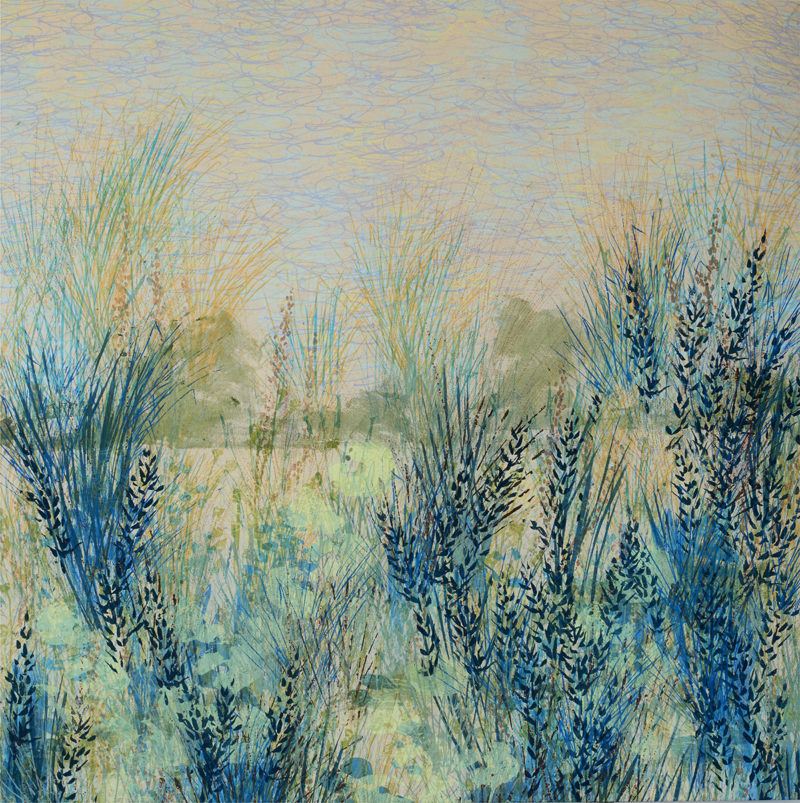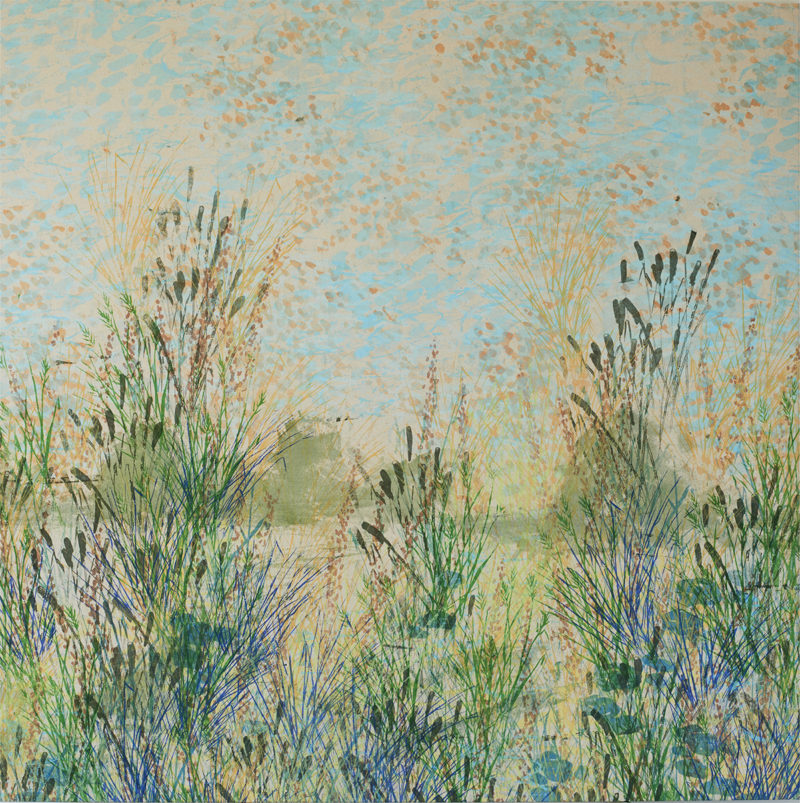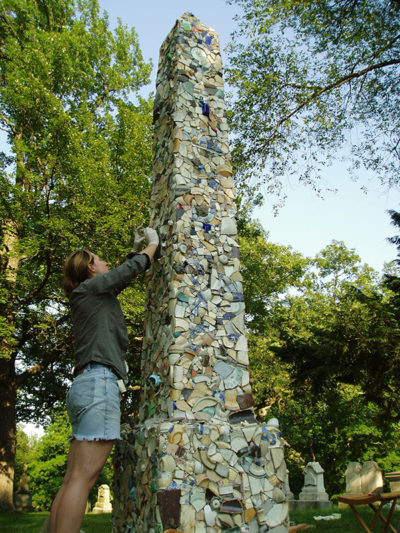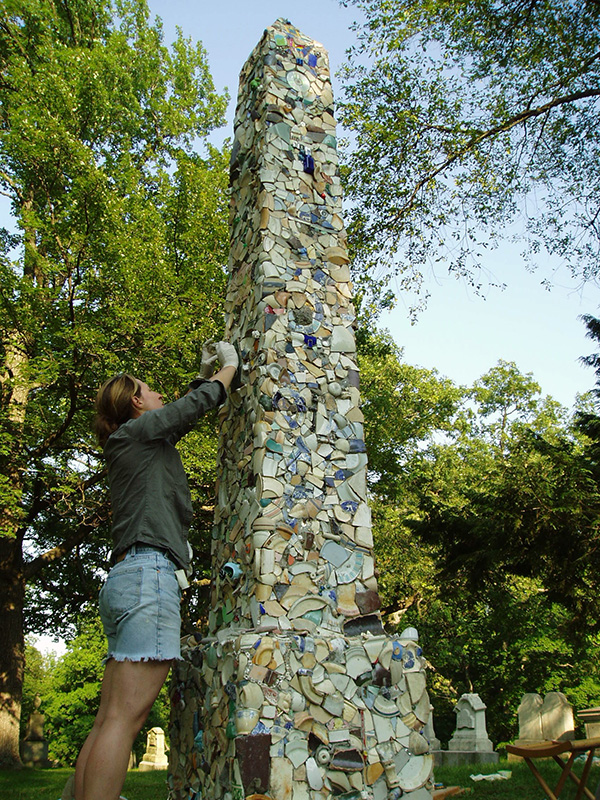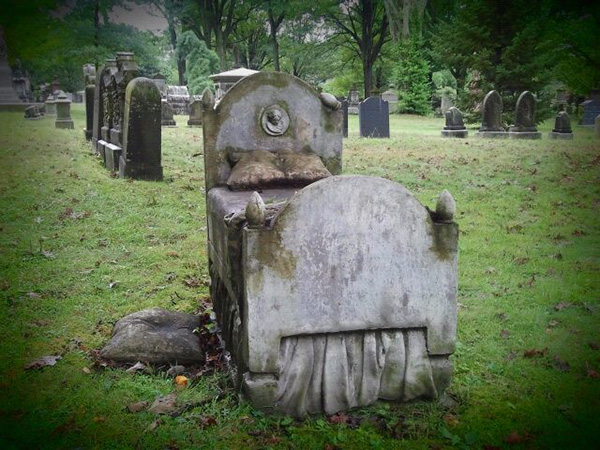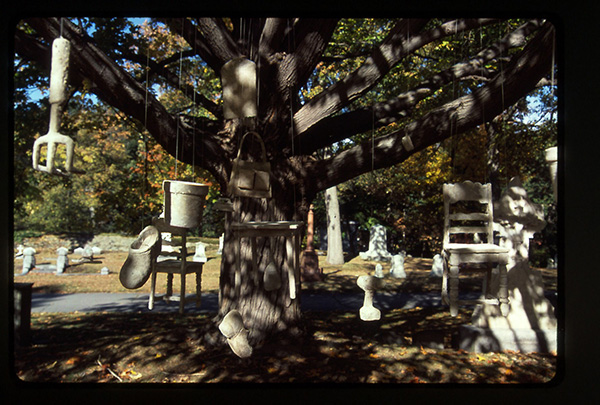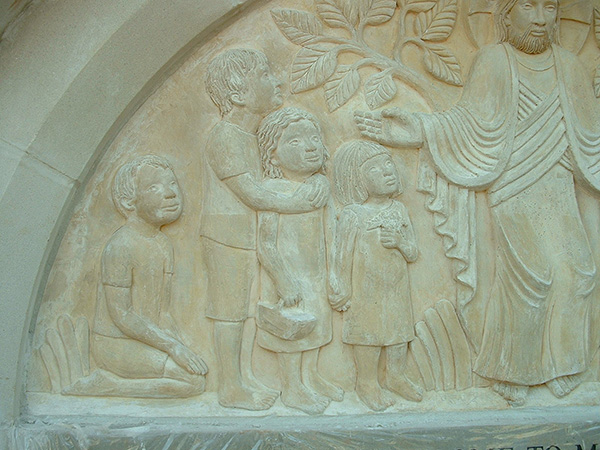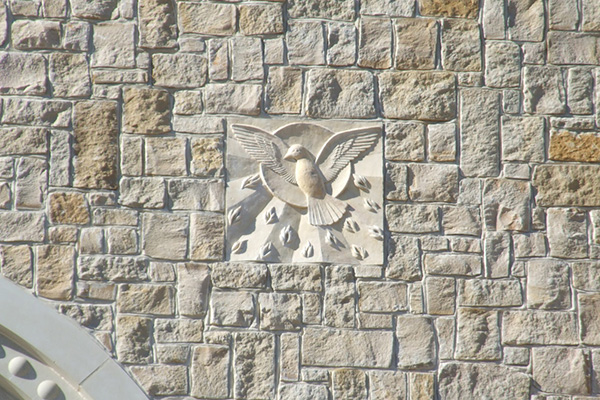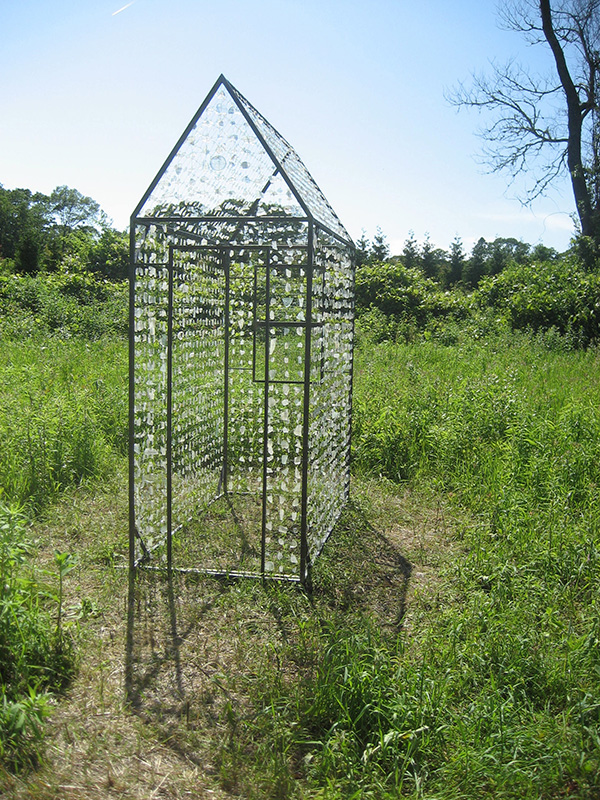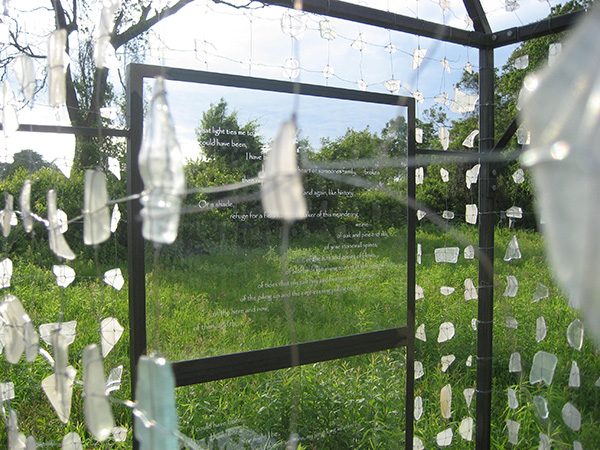So when Wilson, who works a day job at a tech startup, was casting about for an entrepreneurial idea, sneakers seemed a natural fit. But not just any sneakers. Artefact NYC makes products for the former sneaker-head who has outgrown tennis shoes and needs sophisticated footwear that moves seamlessly from the workweek to the weekend, says Wilson.
Make no mistake: The company’s signature sneaker, dubbed No. 85, is not meant for the gym. Wilson runs down the details: Italian leathers that get better with age, durable rubber soles, waxed laces, and a sleek, refined profile. He thought he knew a lot about sneakers before embarking on the process, but he soon found out there was quite a bit more to learn. Wilson says, “There were lots of late nights plotting and planning. I definitely know more about leather—nubuck, suede, pigskin, how smooth, how buttery, how durable. I know a ton more about leather.”
He also knows a ton more about launching a startup involving small-batch manufacturing. One of the biggest challenges, he says, was finding a manufacturer who was willing to make shoes in small production runs. To enhance the product’s aura of exclusivity, only about 100 pairs of each color are made—and when they’re gone, they’re gone. Artefact created a special model for curated men’s clothing website Grailed; it sold out quickly and is now in demand on the resale market.
Wilson says the rise of independent fashion brands, with products sold directly to consumers, helped inspire Artefact; such brands, he says, are “having a moment.” But he also gives a tip of the hat, as it were, to Babson: “My education was both practical and inspiring. Babson has a special culture, a motivating culture. I don’t know if that exists anywhere else.”—Jane Dornbusch
]]>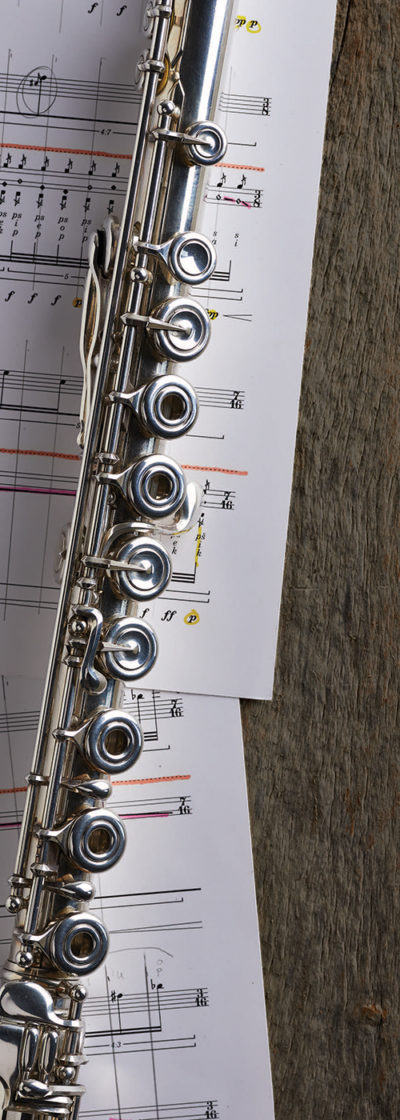
Photo: Pat Piasecki; Score: Trevor Baca
The typical path to becoming a classical musician is as fixed as it is rigorous: With enough talent, effort, and luck, an aspiring musician earns a degree and lands an orchestra job. Jessi Rosinski, MBA’15, is a professional flutist who stepped off that path—and never looked back.
Rosinski says she picked up the flute as a child “on instinct and intuition,” drawn to the instrument’s direct, unmediated nature. “It’s truly an extension of the body. It’s really vocal and human; what you can do with your breath is what you can do with your flute,” Rosinski says. “It’s very organic, which makes it precious.”
Her ambitions evolved in college, when the aspiring classical musician realized that “contemporary music is where I really shine. Orchestra music doesn’t light me up the same way.” After graduation, instead of seeking an orchestra position, she went for a master’s degree, choosing the New England Conservatory (NEC) because of Boston’s burgeoning contemporary music scene. Today, Rosinski performs with several new-music ensembles, including the Callithumpian Consort, Boston Modern Orchestra Project, and Sound Icon; she also teaches entrepreneurial musicianship at NEC and does consulting for arts organizations.
Contemporary music, with its dissonance and complexity, can be a hard sell to some audiences, she acknowledges. But to Rosinski, new music has an urgency that makes it vital. “What drives me as a musician is bringing to life something exciting and relevant,” says Rosinski. “Contemporary music is here and now.” Playing newly written music, she says, also allows her to form collaborative relationships with composers. “I love working on new pieces and premieres. It’s awesome to help a composer bring a piece to life,” she says.
Her Babson degree—earned, she says, “to see if my voice could go beyond my instrument”—supports her ever-evolving goals. “Contemporary music and entrepreneurship are both about creating new things and finding ways to make the impossible possible,” she says. “They’re the same in so many ways.”
]]>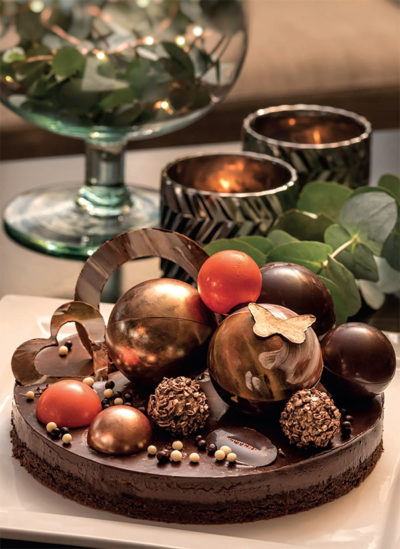 There are many ways to be a disruptor, an innovator. Some use technology; some work through politics. Ebru Ipekci ’93 does it with chocolate.
There are many ways to be a disruptor, an innovator. Some use technology; some work through politics. Ebru Ipekci ’93 does it with chocolate.
The Istanbul native worked at Chase Manhattan briefly after Babson, but it wasn’t a fit. “I wanted to be in a business that has no boundaries. I wanted to create something,” she says.
Noticing an unfilled niche in the Turkish marketplace, she started writing cookbooks, teaming up with a partner who had trained at Le Cordon Bleu. The cookbooks led to wider culinary ambitions. “There were no specialty bakeries in Turkey,” says Ipekci. “So we said, ‘OK, let’s create a French bakery.’”
The shop, called Butterfly, opened in 2003 and was an immediate success—so much so that a slew of imitators followed. Looking to innovate, Ipekci began offering a line of high-end, handmade chocolates that eventually eclipsed the pastries. Today, she says, Butterfly is “probably the biggest handmade chocolate business in Turkey.” They still sell pastries—but exclusively chocolate ones. Ipekci was deeply involved in designing her four stylish Istanbul shops, the newest of which opened in March.
Butterfly offers the kind of fashion-forward creations you would expect to find in Paris or New York. Ipekci, whose interests extend to art, design, architecture, and technology, creates new chocolate collections several times a year, reflecting seasonal ingredients and trends in design. She has drawn inspiration from sources as disparate as chia seeds and Turkish Iznik tiles. For her most recent New Year’s collection, flavors included gingerbread, tahini, cinnamon gianduja, and apple caramel.
A consistent best-seller pairs chocolate with pistachios from Gaziantep, the Turkish city famous for those nuts. But Ipekci always tries to push the envelope. “Buckwheat is very popular in French pastry,” she says. “We did it this season—buckwheat with dark chocolate. I loved it, but it didn’t sell much.” That doesn’t trouble her; she knows that educating customers’ palates—part of her role as an innovator—can be a process.
Looking ahead, Ipekci is excited about improving her online presence and incorporating more technology into the business, making it easier to shop on the website and adding worldwide shipping capability. “The sky’s the limit,” she says. “This is what I like about this business. There are no bounda-ries. I keep thinking of new things that haven’t been done.”
]]>
Art by John Thompson, MBA’82
“I paint mud puddles,” says John Thompson, MBA’82, in a modest understatement. Thompson’s paintings and prints reflect his close observation of waterways and ponds, and how their surfaces interact with light and plants. His art, he says, is an outgrowth of “taking in a quiet moment, if you stop and look.”
Thompson’s professional life, veering between art and business, hasn’t always allowed him those quiet moments. He earned a bachelor’s degree in studio art and a master’s in art history, then opened a gallery and weaving business in Portsmouth, New Hampshire. Weaving helped hone his keen sense of color. On a late-fall day in his bright, airy studio in Waltham, Massachusetts, he says, “When you’re weaving, you start blending these funny colors, and you see how blue, in proximity to yellow, becomes this wonderful yellow-blue.” A visitor’s woven scarf provides a near-at-hand example.
Seeking greater financial security, he pursued an MBA at Babson and spent many years working for a software company. But when that company was sold, he turned back to art, earning an MFA from the Massachusetts College of Art and Design (Mass-Art). “I thought I’d be a Sunday painter,” he says, but art actually became another career. His work is displayed in restaurants, institutions, galleries, and elsewhere; he also teaches art at MassArt and Framingham State University. And as owner of the Lincoln Studios building that houses his workspace and that of more than a dozen other artists, his business acumen still serves him well.
Thompson mixes media to create a sense of depth and rhythm in his landscapes. The resulting layered effect mirrors his scrutiny of the natural world. As a statement on his website puts it, “Variations and constant change in the color, pattern, texture, and light become opportunities for observing the fleeting beauty of the ordinary and the accidental, the common and the sacred.”
As a teacher, Thompson strives to help students find their voices. After a lifetime of professional pivots, he seems particularly well-positioned to impart that lesson: Having found his own voice, he has no intention of stilling it anytime soon. “At age 67,” he says, “I’m not learning how to slow down.”
]]>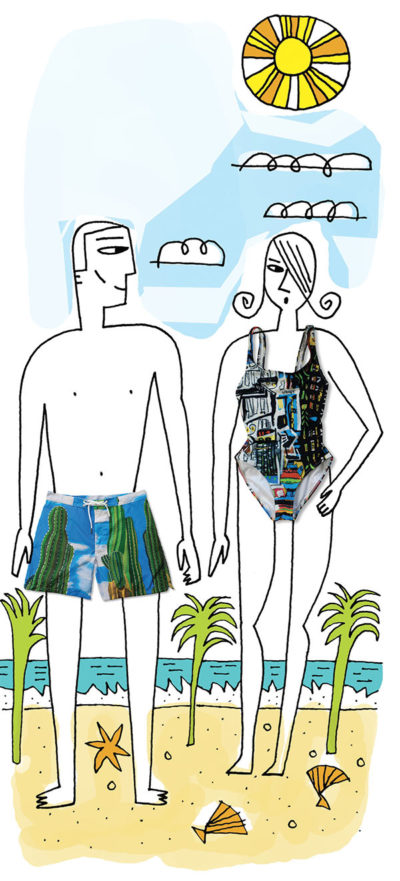
Illustration: Christian Roux
As the saying goes, art is where you find it. Thanks to John-Marshall Stubbs, MBA’14, art now can be found on one of the unlikeliest of canvases: swimwear. Stubbs selects original, colorful paintings and then adapts them for imprinting on men’s and women’s swimsuits, which he sells through his company, Curated Clothing.
Growing up in Dallas, Stubbs was immersed in art—and commerce—from a young age. His mother owned a gallery, and he spent his early years visiting galleries and art fairs. After college, where he majored in art history and minored in business, he ran a second outlet of his mother’s gallery.
But the entrepreneurship bug also bit him early, so he soon came to Babson for his MBA. Shortly after graduating, Stubbs came across a process called sublimation printing, which makes it possible to reproduce high-resolution images on polyester fabric. Inspired, he pondered the potential of various printed products before having a eureka moment: “At three in the morning, I shot out of bed and wrote down ‘swimsuits,’ so I wouldn’t forget it.” That was in July 2014; he set to work researching manufacturers and had his first sample suit ready that December.
Today, Curated Clothing sells numerous styles online and in several retail stores. The business has changed the way Stubbs looks at paintings. “Now, when I see a piece of art,” he says, “I think in terms of how I can cut it up and put it on a swimsuit.” Stubbs also has become skilled at manipulating images in Photoshop to make them swimsuit-ready.
His cred as a former gallerist makes artists comfortable working with him, says Stubbs. Each suit is labeled with the artist’s name and signed, and Stubbs, who works with about 16 artists, takes his mission seriously. “I’m not just buying an image,” he says. “It’s an art gallery you wear.”
Now living in Los Angeles, Stubbs wears his own creations frequently. “I go to the beach a couple of times a week,” he says, “and every time, someone says, ‘That’s a cool swimsuit.’”
]]>
Photo: Andrew Klein
Artwork: LaShonda Cooks ’10
The daughter of an art teacher, Cooks says she was “always interested in the arts.” But even in high school, she recognized the value of a business background for an aspiring artist, and after a Babson brochure found its way into her hands, she thought the College might be the right place for her. An Enrico Dallas Scholarship—a four-year award for Dallas-area students— sealed the deal.
At Babson, Cooks was active in theater and on the student newspaper but always enjoyed the refuge of the ceramics studio. “Back then, very few students would venture there,” she says, “but for me it was therapeutic and peaceful.”
She turned to painting after Babson. Now, when she finishes her day job as an insurance adjuster for Geico, Cooks can be found in her studio for two hours every Monday, Wednesday, and Friday (“just to structure it a little bit”). She also leads free paint parties at a local recreation center. “That’s my way of giving back,” she says.
Much of her work is done on commission. Clients typically provide photos of loved ones, and Cooks brings her distinctive style to each portrait. “I try to capture their essence,” she says. But her own artwork ranges much more freely. “I like to paint what inspires me,” she says. “Dancers, movement, couples, a ballerina. Women that are strong and powerful. Women of color.” Questions about female identity intrigue her, as she grapples with societal notions of “what a woman is, and what a woman isn’t.”
However substantive her themes, Cooks’ work remains ebullient. “I like to capture a range of emotions,” she says, “but typically, they’re happier emotions. My paintings are pretty serene and joyous.”
Cooks and classmate Jamaal Eversley ’10 will hold a joint art exhibition on campus in the Hollister Gallery. The show opens on Back to Babson weekend, starting September 15.
]]>Artists have been carving gourds for at least 4,000 years in Peru; McLaughlin began carving 11 years ago in Minneapolis, her home for many years. An avid gardener, she planted some gourd seeds alongside a winding path at the back of her property. Thenceforth the trail, overhung with gourd vines hanging from trees, was known as Gourd Alley, and the bountiful harvest inspired McLaughlin to start carving. The name stuck: McLaughlin, now a professional gourd artist who splits her time between Florida’s Sanibel Island and Sandwich, Massachusetts, calls her business GourdAlley.
McLaughlin describes the medium as similar to soft wood, and her creations fall into roughly two categories. Larger specimens are crafted into bowls or ornamental containers. Miniature gourds become “gourdikins”: rotund little people, whimsically painted and accessorized, that are suggested by the gourds’ bulbous shapes.
The creative impulse came naturally to McLaughlin. Torn between art and business as a teen, she originally enrolled at Skidmore College but transferred to Babson. Focusing her studies on business suited McLaughlin. But, she adds, “I have a creative side that can’t be repressed.”
McLaughlin also has a strong stomach, which comes in handy for carving gourds. She places her fresh gourds in storage for a year to dry; when they emerge, they are moldy and malodorous. A dried gourd must then be bleached and scrubbed cleaned—“to within an inch of its life,” says McLaughlin—before it can be carved. “Carving gourds is not for sissies,” she notes. “You must wear a mask, and you must love power tools.”
Carving gourds went from avocation to vocation for McLaughlin when she “retired somewhat” a few years back. She has sold her work at craft shows but is now happy to be part of a nearby artists’ retail co-op.
The irrepressibly creative McLaughlin also paints furniture, but gourds are her passion. “I have a lot of variety in my work,” she says. “It’s not just a flat canvas. It’s three-dimensional, and it’s based in nature. The wonderful thing about working in gourds is that you can carve them, you can cut them, you can stain them. I’m not locked into anything. That’s what makes it fun.”
]]>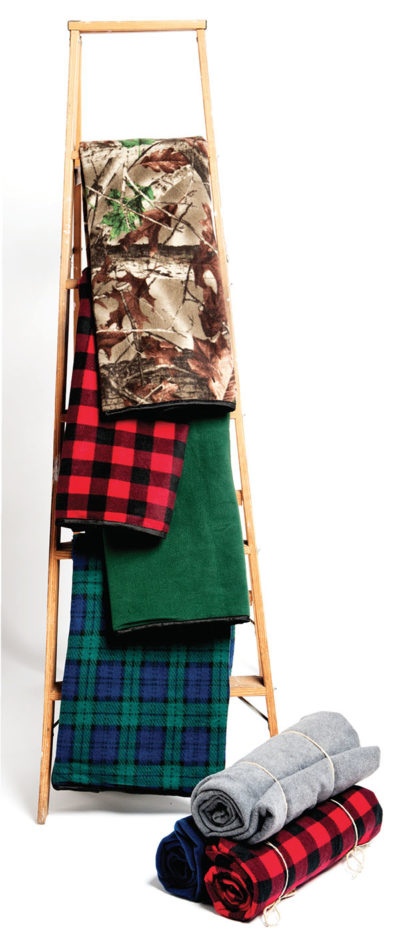
Photo: Webb Chappell
Shortly before starting his first year at Babson, Maxwell Perry ’19 sat at dinner with his mom, Shelley, brainstorming new business ideas. He was prepping for “Foundations of Management and Entrepreneurship” (FME), knowing he would be required to start and run a business. As they chatted, Perry’s mom reminded him of a family story about a blanket.
His mom was just 4 years old when missionaries visited her church to talk about their work with children in Africa; she was so moved that she spontaneously gave the missionaries her much-loved (and tattered) security blanket to take to those kids. “My mom has always had a big heart,” Perry says.
Inspired by his mom’s act of kindness, Perry sketched plans for a business that would sell blankets to customers as a means to donate blankets to homeless people, a “buy one, gift one” model. He proposed the idea in FME, and his classmates loved it. Beantown Blankets launched in May 2016.
When coming up with a blanket design, Perry’s team wanted to make it practical for both consumers and homeless people. At first they considered using waterproof oilcloth on one side, making the blanket ideal for use at outdoor events and durable for people who live on the streets. But they couldn’t find oilcloth. Instead, they discovered a small, family-owned supplier in Fall River, Massachusetts, that offered soft, fleece blankets with a waterproof nylon backing.
The blankets feature traditional patterns, such as red and black buffalo check, green and navy plaid, and even a solid “Babson green,” with 10 designs in all. After the class ended, Perry decided to keep Beantown Blankets going and now runs it as a family business while working toward his degree. For every blanket sold, Beantown Blankets donates another to the outreach program at Boston’s Pine Street Inn, the largest homeless service provider in New England. By February 2017, the company had donated 800 blankets. Recently, Perry began to contemplate new products, including lightweight muslin baby blankets for swaddling newborns, which would allow him to donate blankets to an orphanage or program for at-risk families with infants.
One night last fall, Perry was in downtown Boston with his girlfriend when they encountered a homeless woman on a sidewalk. Perry happened to have several Beantown Blankets in his car, so he ran to grab one for her and was moved to tears by her thankful response. “It was so much more than a blanket to her,” he says. “The look on her face is my current motivation.”
To learn more, visit beantownblankets.org.
]]>Today the couple produces tables in many styles, such as trestle, farm, Parsons, and bistro, as well as other pieces, including stools and bookcases, all custom-made from reclaimed and repurposed wood. “The hardest part is finding good wood,” says Whittier, who has traveled around rural Colorado to find stock. “It’s exciting,” he says. “You never know what you’re going to find in a barn until you break it down. The large rafters and trusses in some old barns were made from trees that sprouted around 500 years ago.”
The couple also has worked with tobacco-barn siding from rural Tennessee. Whittier says, “That wood, in all thicknesses and colors, from brown to silver, had taken on the aroma of tobacco. And we have found shotgun pellets in the wood.” Recently, Whittier’s favorite wood is cypress planks collected in Missouri, typically from barns and chicken coops. “This wood can have up to 100 to 150 years of use and paint,” he says. “You see hoof marks from horses, initials and dates scratched by kids, and worm holes.”
To craft each piece, the couple uses old-world techniques, such as mortise and tenon joints. Surfaces are cleaned with a wire brush and sanded, but not too much. “We may stain it,” says Whittier, “but the character remains.” To seal the wood and make the surface cleanable, pieces often are covered with a durable mix of oil and urethane. “Our tables are modern-day heirlooms,” says Whittier. “They’re made to be lived on and used; they’re built to withstand a hurricane.”
One of Whittier’s favorite projects was an emerald-green stained, 8-foot long by 3.5-foot wide dining table. “It was shocking and different,” he says, “but it looks terrific in the house. That’s the beauty of custom work. Truly anything is possible.” To learn more about Whittier’s creations, visit oldwoodsoul.com.
]]>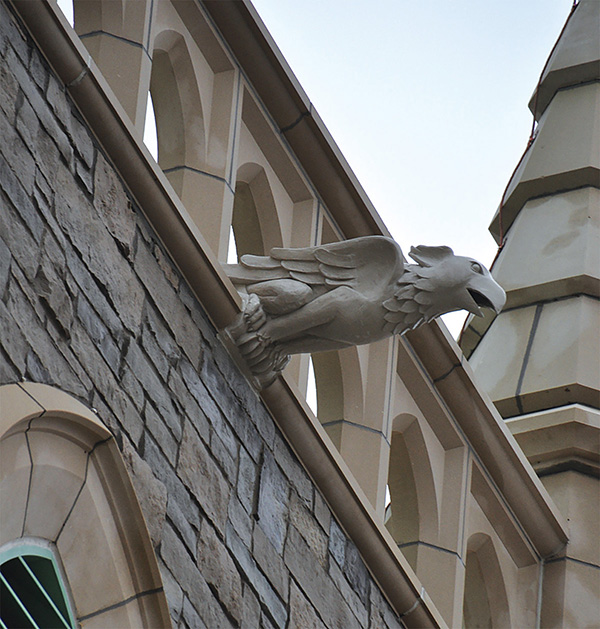 Danielle Krcmar, Babson artist in residence, is a sculptor fascinated with figures and the study of movement and expression. Krcmar, who creates art using a range of sculptural media and reclaimed or found materials, is inspired by human anatomy and the structural similarities among living things.
Danielle Krcmar, Babson artist in residence, is a sculptor fascinated with figures and the study of movement and expression. Krcmar, who creates art using a range of sculptural media and reclaimed or found materials, is inspired by human anatomy and the structural similarities among living things.
Recently, she sculpted gargoyles (shown here) for a church in southern Illinois that had been leveled by a tornado and was being rebuilt in the Gothic style. However, this 21st century request for an art form popular in the Middle Ages was not her first. In 2008, an architectural firm that Krcmar previously had worked with contacted her to create gargoyles for a church renovation near New Orleans. For that project, Krcmar sculpted two figures; each was professionally cast twice in concrete to make four gargoyles.
When the same firm accepted the project in Illinois, it reached out to Krcmar again. The request was for griffins, a mythical creature that combines a lion and an eagle, but with some stipulations. “The church wanted the bird part of the gargoyle to be dominant,” she says. Krcmar thinks the community wanted to capture the strength of the eagle and its ability to soar, attributes the community may have needed after the tornado. The gargoyles, just 36 inches from beak to tail, also were to be functioning downspouts, with the forms accommodating a drainpipe. “Working on the engineering aspect was a challenge,” she says, “but it was a pleasure to do a lot of fun research.”
When creating the gargoyle, Krcmar sculpted the figure in Plasticine, an oil-based clay that never dries. “Plasticine can be heated to make it loose and can be carved when it cools,” Krcmar explains. “Then a mold was created from the original sculpture.”
Historically, gargoyles were made from stone or, more recently, with reinforced concrete. But, in this case, the already heavy concrete might have become unstable with a drainpipe as part of the structure. So sturdy and lightweight fiberglass was chosen. Because working with fiberglass resin is toxic, four identical griffins were cast in fiberglass from the mold by a professional firm, and the material was tinted and textured to blend with the church.
Krcmar loved the gargoyle assignments and the dialogue between the customers’ vision and her interpretation. “It was strangely liberating to work on something that wasn’t my own idea,” she says. “It was a mix of detachment and investment and research.” Though she misses having the gargoyles in her studio, she is happy they are where they will be seen. “This work is out in the public sphere, in the landscape, creating dialogue.”
]]>

